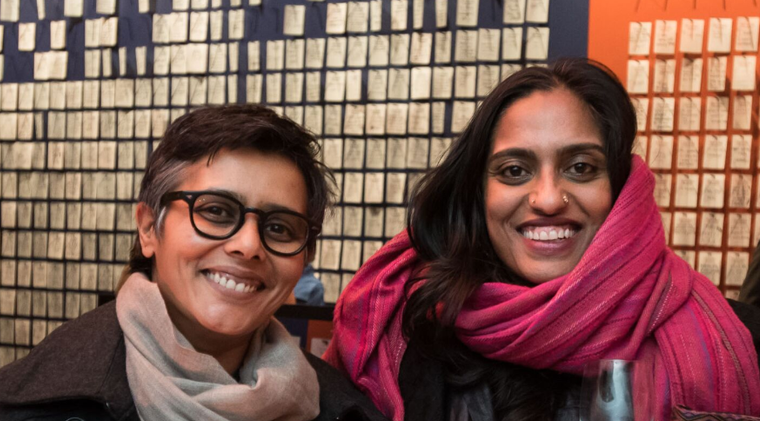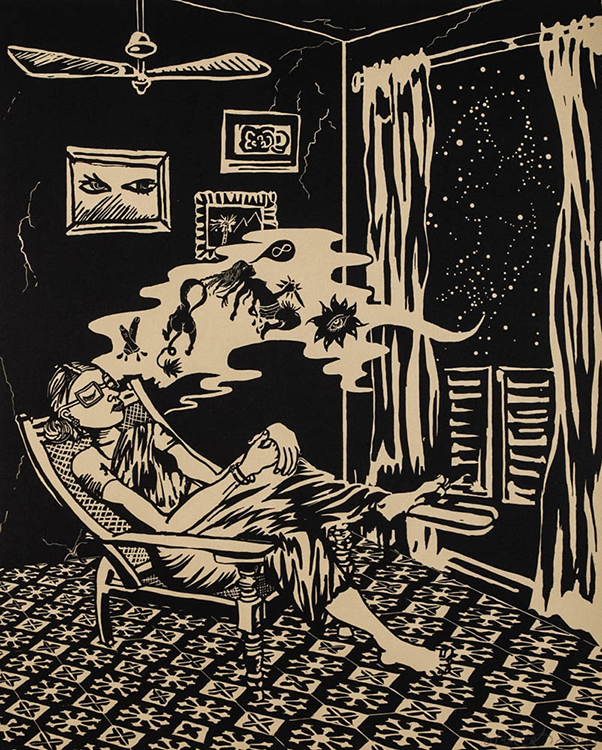This exhibition was originally on view from February 28, 2020 through June 14, 2020.
The project Sultana’s Dream was inspired by the Bengali Muslim feminist writer Rokeya Sakhawat Hossain’s early 20th-century story of the same title. The prints–all black linocuts on tan paper—both illustrate elements of the text and use its imagery and themes to explore urgent topics of the political present.
Hossain’s 1905 short story begins in reverie: “One evening I was lounging in an easy chair in my bedroom and thinking lazily of the condition of Indian womanhood.” The narrator soon is led on a dreamlike stroll through Ladyland, a utopian matriarchy where women have harnessed the power of the sun to live prosperously and efficiently. Education and compassion for refugees are paramount, and men remain indoors, in domestic spaces. Ganesh literally interprets certain moments from this pioneering work of feminist science fiction: the opening scene in the easy chair, for example, or a military battle won by wielding an inventive solar weapon. Other images describe and build upon Ladyland’s architecture and environment, further elucidating the vivid atmosphere that Hossain created.
Far from merely illustrating Hossain’s text, however, the portfolio, in the artist’s words, “connects with problems shaping 21st-century life: apocalyptic environmental disaster, the disturbing persistence of gender-based inequality, the power of the wealthy few against the economic struggles of the majority, and ongoing geopolitical conflicts that cause widespread death and suffering.” Like much of Ganesh’s work, Sultana’s Dream engages these subjects through the lens of history, literature, and mythology not only to examine the relationship between imagined and lived worlds but also to consider how utopian fantasies might be realized.
Media
Download a PDF of Rokeya Sakhawat Hossain’s story Sultana’s Dream.

About the Artist
Chitra Ganesh is a visual artist based in Brooklyn, New York. A multimedia artist known for articulating feminist and queer narratives that weave religious, mythological, and popular iconographies, Ganesh was born and raised in a Hindu Indian immigrant family in Brooklyn and Queens Her wide-ranging practice, which includes drawings, photographic digital collages, text-based works, and collaborations, draws from a vast array of mythology, literature, and popular culture, both worshiped and vernacular, to reveal these narratives from the past and to imagine new visions of the future.

